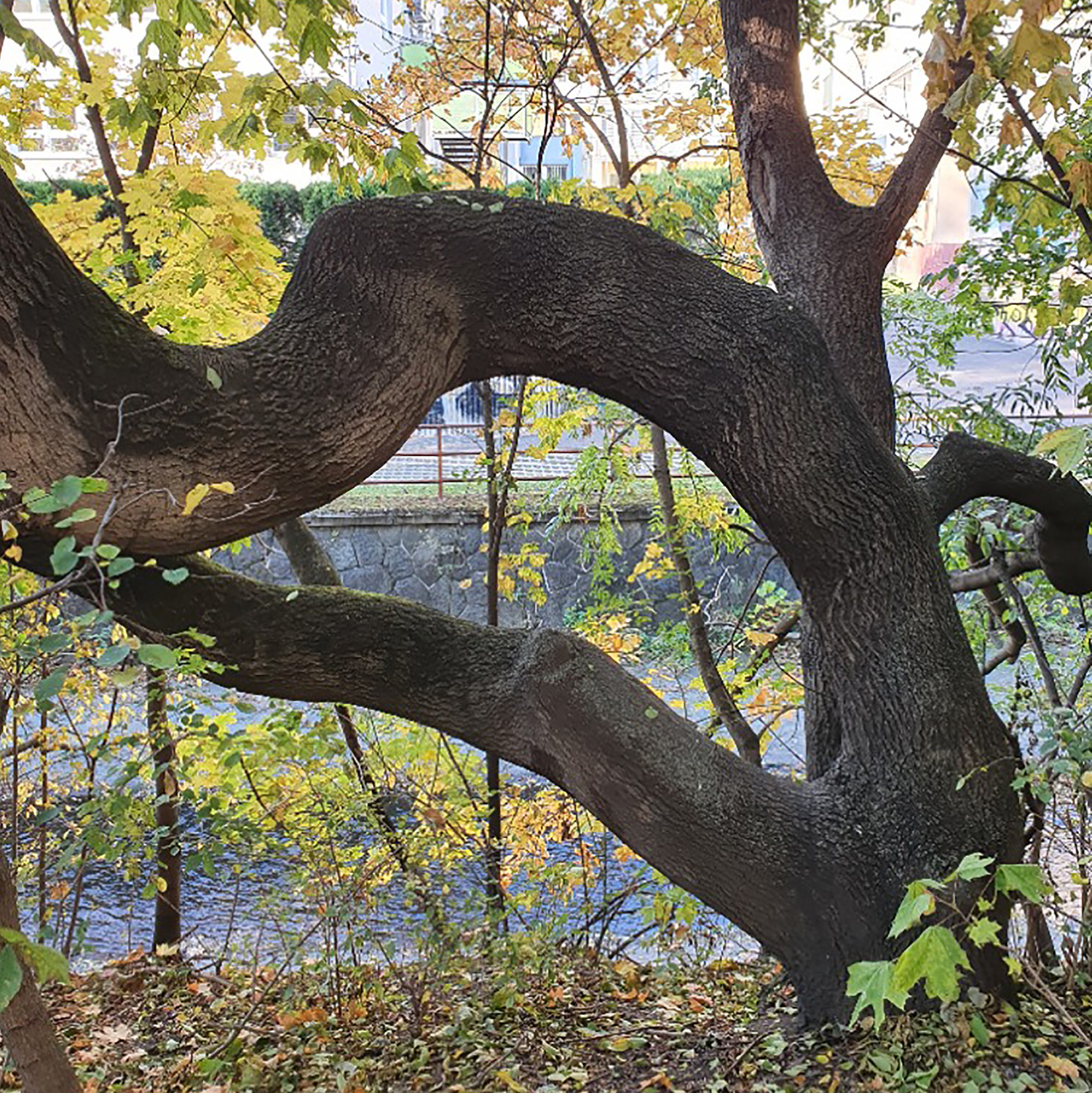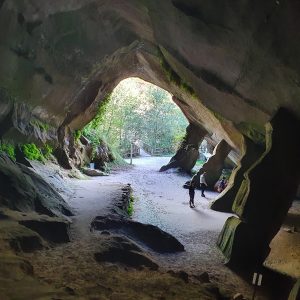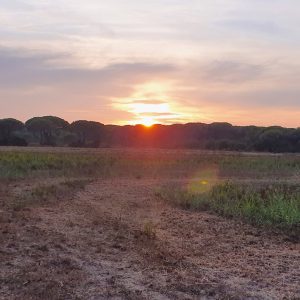Let us focus on the next topic and that is rta.
Remember in the shanti discussion when we talked about the feeling of peace and that it comes from an alignment with what is natural? Let us draw a picture of vedic thought about what is natural.
Rta is a very potent word and concept. It stands for the cosmic order, that which is invisible but behind all forms of creation, maintenance, and destruction. Without realizing it, all that exists came from this order is a part of this order and behaves in line with this order.
That means all that exists follows this order. All with one exception. That exception is us, the human species. Although we are a part of the same order as trees, mountains, rivers, animals, plants, stars, and galaxies, we are the only entity that is AWARE of it. Only human beings realize there is a cosmic order, rta. The rest follows it without knowing it instinctually.
Why is it so is an important question, one that does not have a straightforward answer? Let us present more ideas, get deeper into these concepts in a hope that an answer will appear from this exploration.
Rta is very often viewed as cosmic law, but since we have experienced the human law, although both terms are ultimately the same, let us stay with order rather than a law.
An order is something indisputable, something that is given. It is also inherent in the functioning of things, be it nature as we know it or galaxies as we are discovering them. We might say that science is discovering this order and in the bits and pieces way, this is a true statement.
The first fact about rta, the actual order is, that it is given. As it is already given, firmly and inherently established in the nature of things and creation itself, there is no need to create it or to do something about it. There is even no need to make an effort to follow it. All happens by its nature and in its own nature. For us humans to understand it, we might say that alignment with this order is instinctual.
The trees are not taught to shed leaves in the autumn, just as they don´t get spring training on how to turn a bud into a flower. There is no manual for birds on how to teach baby birds to fly. I am intentionally giving only a few very simple examples for us to easily relate to this concept.
But try to imagine all of this happening on a large scale, a scale of planet Earth. All there exists works together /minus human influence/ in one big network of collaboration beyond our comprehension. Let us take it further, to the planetary level and even further to the level of galaxies. Even in our wildest imagination we cannot phantom even the minutest idea about the level of coordination and intricate connection needed for nature to work together.
For some reason, we humans stand in all of this rather lost. Take for example our education. How many ideas, opposing one another, are there in our approach through which we are teaching our children about life? In all these ideas, convictions, theories, and conducts do we even know what is natural?
Or better yet, how do we know what is natural?
The answer might not make you happy, as what is natural is easy. It comes with no effort, requires no energy, and generates the required amount of energy to sustain us for continued living in this already existing order.
Despite the natural being easy, we humans cannot find the natural easily. One obvious obstacle is that we have so many ideas and opinions about everything, how things function, what is right and what is wrong, that our mind instead of leading us to the natural takes us away from it. Alignment with rta is instinctual and instincts permeate actions, words, and ideas. If we take the sequence of how things come to existence, they all start with a thought. A thought is formulated into words – either spoken outwardly to someone or inwardly to oneself. Thoughts formulated into words translate into action. Actions are visible and tangible, but behind them lie thoughts that express the order.
Let us take a common example to which all of us may relate easily. When we live naturally in alignment with the order, our instinct tells us in the evening when we are tired. Regardless of what we do, we know this is the time to take ourselves to bed for the needed rest. The body wakes up then at a certain time with no alarm clock – it knows the right time to stop the rest and get back into action.
Does this happen naturally at 2 AM followed by 10 or 11 AM mid-morning time for a groggy wake-up? We all know the answer is NO. We humans have the power of free will and frequently use that will to make our own order. We invariably make our own rules convincing ourselves and others that this is the natural way to go. When a majority of people do the unnatural thing, it must be natural, we tell ourselves. We all know that this is not so. Just because something unjust is happening on a massive scale, it does not mean it is normal and right. It usually means it is a massive deviation from what is natural, unfortunately just that.
We live in a predominantly unnatural world, so finding the natural might seem difficult, if not impossible. Although it might be so, some undisputable rules give us important clues.
Another word for rta is rhythm. Order means rhythm. When you do things in proper order, you discover a natural rhythm in them. Let us take nature, that which we know and are a part of, as our guide. What rhythms are there? Let us start from the most common and undisputable one, the circadian rhythm. We are talking about the cycle of day and night. There is no argument about the fact that day is followed by night and night turns into a day. Such is the law, the order and this happens every single day, time after time, without a fail. So the circadian rhythm qualifies as a manifestation of rta.
If this is the natural order, what does this rhythm means to us naturally, even instinctually? On the most basic level, we might say that a day is meant for activity and a night is meant for rest. Even here we might ask ourselves how does this match with us? Not only in what we do but how do we feel? For example, do we feel more lively, energetic, active, or interested in things at night instead of during the day? Or do we drag ourselves through the day or parts of it as if it was night wishing for no activity and only rest? These are very elemental questions that show our alignment with the most basic rhythm, the cycle of t day and night.
What happens is that our mind begins to define when night starts. The night starts when we want it to begin based on our convenience. Sometimes the night starts when all our work is done, sometimes the night is marked by our body falling into a comatose sleep. At other times night starts after we have had fun or finished watching the next episode of our favorite TV program.
There are of course other legitimate night activities that come into play: parents staying awake at night tending to a sick child, doctors, and nurses, and other professions working through the night so the rest of us may have a good respite. I may go on, but there is no need. We all understand the difference between rightful action and a choice that defies the natural order, just because we can. Or we don´t want to know and act any better. Our idea of a good life is that we do what we want rather than what is appropriate.
Switching from the circadian cycle, let me talk about another key concept closely connected with rta and that is dharma. Many people interested in Indian philosophy are familiar with this word, but only a few understand it properly. Some people even feel that without finding out what their dharma is, they cannot lead a fulfilling life. So searching for personal dharma is the main focus of their life.
The truth is that the further away from the natural order we are, the stronger notion we have that there must be some special purpose to our life. We imagine dharma as a higher calling, a special task that we must discover and fulfill for our life to have meaning. We view dharma invariably as some special mission our spirit has on earth. The keyword here is special. Our idea of dharma is never about anything mundane, ordinary. A daily life that bothers us, family relations that are non-harmonious and constricting are never part of dharma. We usually think /at least that is my experience in working with people/ that our dharma is to help others to live a good life. That is our higher purpose and so we go and invariably enforce our idea of what others need to do to live a good life.
There are several problems here, besides the whole plot is flawed. The first fundamental flaw– if we operate within the right wrong paradigm – is that the mission to help others does not involve us. The individual seeking to save the world is usually the one who needs the most saving. A bold statement, true, but here is a justification for it: Dharma is that which upholds the cosmic order. We might say it is the action that is in line with the order, the natural action that comes from inherent order and rhythm in everything.
Dharma means to act in line with the natural order. This means to follow the cycle of day and night, to follow the natural order in relationships, in everything we do, say, and think. Such living brings a feeling of satisfaction that is the basis of inner peace. We know inner peace from the first discussion, now we are looking at what shanti relates to.
In this way, dharma is very simple and ordinary. Since we were born, our dharma is to be a child to our parents. That involves behaving like a child, being a child for the rest of our lives. Respecting parents, getting a feeling of security and protection from them, giving them naturally authority they possess. It also means, and this is important as relationships go both ways, for the parent to embody the dharma of unconditional love. That is the natural dharma of a parent.
Do you start to see how non-easy this is? How far away from the natural we live? You might answer this is not your fault. You are just a victim of a dysfunctional world, so it is only natural to continue in the same vein. While this seems logical, if this was the case, there would be no progress, no evolution in anything. There would be no chance to move from unnatural towards natural.
Life provides evidence pointing in the opposite direction. So much progress is there: we know how to fly to the Moon, we are discovering the landscape of Mars and many other unimaginable things. We know so much about so many things, yet this does not mean that rta, the order is becoming more obvious to us. To discover rta we need wisdom. Wisdom is probably the most powerful trait of human beings, yet if we don´t possess it, we lose our basic understanding that trees, birds, and other living entities have.
Do you see how everything is connected with everything else? That is rta, too.
Shanti is connected with rta. Rta is intimately involved with dharma. Both rta and dharma may be discovered and lived only through our knowing. Only wisdom may bring that knowing. This will be our next topic of deeper exploration: the knowledge that is wisdom.
Until we do that, why don´t we live the rta on the simplest level by respecting what the day brings naturally and what comes with the night? That in itself puts us in an alignment on the most basic level, a strategic point that gives us a chance to perceive other levels of rta. There is a long way to the all-encompassing existence and yet, everything that is, even the smallest grain of sand or salt, contains the universal rta in itself. We are no exception – let our choices and actions reflect that.
Wishing all lovers of life many amazing realizations! Remember: even the most difficult and longest journey starts with the first step.
In love and light,
Yours dr. Martina Ziska



